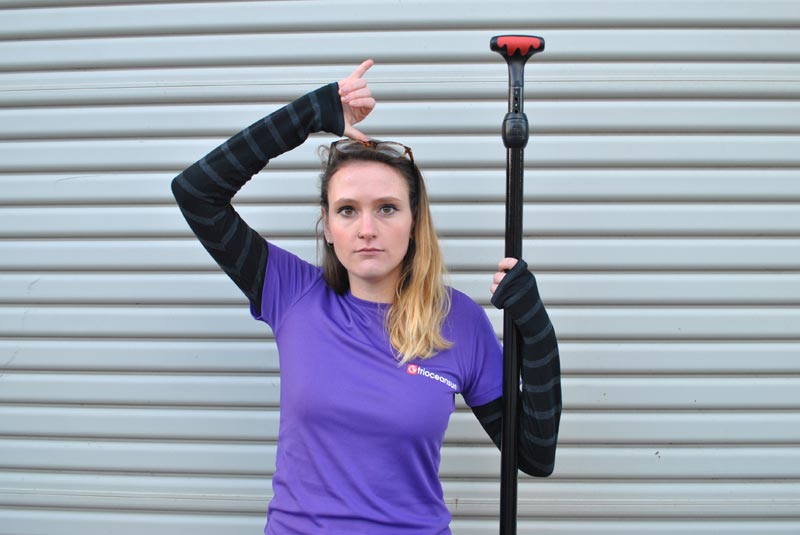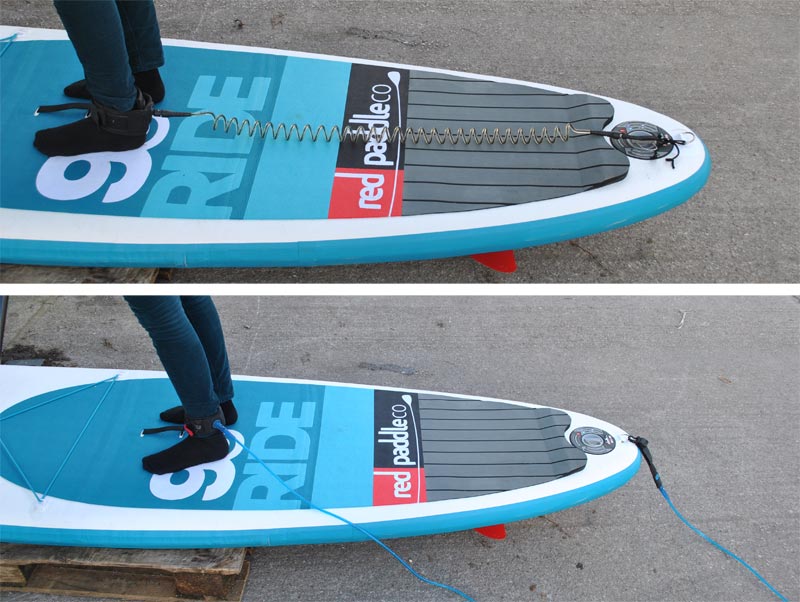
Before buying a stand up paddle board, seek advice from a qualified person. It is important that you purchase the right SUP for you, it needs to be suitable for the water conditions that you are going to be using it on most and you need to feel comfortable with it.
For instance, if you’re looking at doing a bit of surfing on your paddle board, then a slightly shorter board would be recommended and if you want to be able to easily travel abroad with it then an inflatable SUP could be the perfect choice for you.
Ideally, have a test paddle on a variety of different boards before making that all important purchase.
Make sure your paddle is the correct length for your height. A correctly adjusted paddle for your height (6-8 inches above head height) makes the paddling experiencing easier and more enjoyable, allowing each stroke through the water to be as effective as possible.
If you have an adjustable SUP paddle then changing the height is easy and simple. If you have a fixed paddle then it’s just as important to get right, but it requires cutting the paddle shaft and reattaching the “T” handle to the top.

Before setting off on your paddle, ensure you can get back to dry land if problems occur. Safety is key with any watersport so it’s important you take the right steps before hand.
Make sure you can paddle the board back to the shoreline in an emergency. Sometimes, the best way of doing this if you’ve broken equipment, lost your paddle or if it’s too windy is to lie down on the SUP (on top of the paddle if you still have it) and paddle back to the shore like you would a surfboard – making an alternate stroke either side of the board with your arms, your hands acting as the paddle. Check out the video below…
The idea of being left out to sea watching your board float away from you isn’t a nice one for anybody, that’s why it’s important to wear the correct type and size of leash at all times.
If paddling on flat water, a coiled paddle board leash is best. The coiled and stretchy leash type means you are less likely to get your feet tangled up in it as you paddle across the calm bay or up the estuary. A straight leash is best for riders venturing out into the surf. The leash will trail out behind the board as you ride on the wave so always wear the leash on the ankle of your foot that is positioned towards the back of the board.

When starting out and trying to stand up on a paddle board, start off on your knees with them positioned either side of the carrying handle, holding the paddle with one hand on the handle and the other shoulder width apart on the shaft. Do not attempt to get up until you have enough depth of water to cushion your fall if you come off (it happens to all of us!).
Once positioned in a few feet of water, slowly stand up on the board, leaning foward and putting your weight on your hands in front of you on the board. Lift one foot up at a time, keeping your feet a shoulders width apart. Keep your knees slightly bent and face forward…
Before setting off, make sure you are aware of the winds and tides. Paddle boarding is more challenging in to the wind and against the tide so make sure you’re not going to get stuck on your return.
If paddling up or down a river or within an estuary, try and time your paddle so that you are paddling with the tide, rather than against it.
If in doubt, save your paddle boarding for a day with better conditions.
Respect and be conscious of other water users – give yourself ample space when learning and try to keep in control of your board in all situations.
It’s important to remember that other water users may need to cross your path at some point and you might need to cross their’s too. When this happens, always make sure you leave plenty of room and don’t put anyone else at risk.
Get Involved